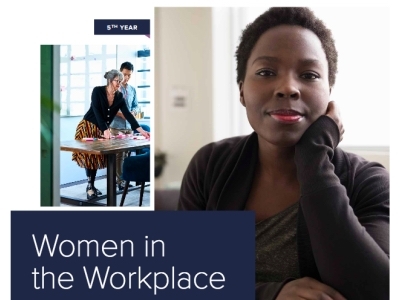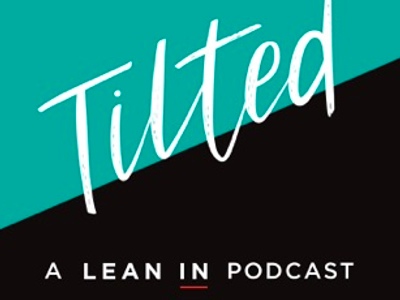Jessica Chivers is the author of Mothers Work! How to Get a Grip on Guilt and Make a Smooth Return to Work (Hay House, £10.99). She is the founder of The Talent Keeper Specialists, an organisation helping employers hang on to and support their female talent during career transitions. See www.talentkeepers.co.uk and follow @TalentKeepersUK on Twitter.
This article is also available as nine short podcasts (totalling 38:28) on soundcloud.
Chapter 4 – It’s a Jungle Gym Not a Ladder
In which we discover a powerfully different way to market ourselves to a prospective employer and Sheryl recommends we adopt two concurrent career goals: a long term dream and an 18 month plan. (Recruiters take note: ’and where do you see yourself in five years time?’ is out of fashion, although really, it was always lame). And get this; the dream needn’t be realistic according to Sheryl. How wonderfully liberating is that?
Key points:
- A new paradigm for career progression “Ladders are limiting – people can move up or down, on or off. Jungle gyms offer more creative exploration. There’s only one way to get to the top of a ladder, but there are many ways to get to the top of a jungle gym.” I read this and feel thousands of career breakers and women returners breaking into a smile. She’s right of course and a client I’m currently working within is the midst of grappling with her next career move which may be a 75 degree diagonal move rather than straight up.
- Seek out high growth companies if you want to get on “Eric (Schmidt, the then CEO of Google) responded with perhaps the best piece of career advice that I have ever heard. He explained only one criterion mattered when picking a job – fast growth. When companies grow quickly, there are more things to do than there are people to do them. He told me ‘If you’re offered a seat on a rocket ship, you don’t ask what seat. You just get on.’”
- Get a growth mindset “An internal report at Hewlett-Packard revealed that women only apply for open jobs if they think they meet 100% of the criteria listed. Men apply if they think they meet 60% of the requirements. This difference has a ripple effect. Women need to shift from thinking ‘I’m not ready to do that’ to thinking ‘I want to do that – and I’ll learn by doing it.’” Couldn’t agree more – anyone worth working for recognises potential and ability to learn when they’re recruiting. This idea is something I touch on in this post about imposter syndrome.
Chapter 5 – Are You My Mentor?
In which we learn not to ask Sheryl Sandberg ‘will you be my mentor?’ and her belief that women seeking out mentors has become a problem: she believes it’s creating dependency on others and compares the search for one as being the ‘professional equivalent of waiting for Prince Charming.’ My view on mentoring (mentor = trusted advisor) is why have one mentor when developing relationships with several trusted advisors at any one time is better and why go looking for ‘a mentor’ when people will naturally appear throughout our careers. It is this contrived seeking out Sheryl objects to, rather than having a mentor per se.
Top tips for women seeking mentors:
- The difference between a mentor and a sponsor: mentors are people who will advise; a sponsor is someone who will use their influence to advocate for us. “Both men and women with sponsors are more likely to ask for stretch assignments and pay rises than their peers of the same gender without sponsors.”
- Approach a mentor when your PD rating is strong: “Studies show that mentors select protégés based on performance and potential. We need to stop telling (young women) ‘Get a mentor and you will excel.’ Instead we need to tell them, ‘Excel and you will get a mentor.” Love this nifty nugget for its focus on self-responsibility.
- Use a mentor’s time well: It should go without saying that a mentee needs to be respectful of their mentor’s time and highly focused in the way they use it. Whilst Sheryl probably doesn’t label herself as a mentor, she remarks on several people/conversations where that other person undoubtedly sees her as a mentor and praises two of them for ‘never asking a question she could have answered on her own’ and for doing their homework, being crisp, focused and gracious. “Mentees should avoid complaining excessively to a mentor. Using a mentor’s time to validate feelings may help psychologically, but it’s better to focus on specific problems with real solutions. Most people in a position to mentor are quite adept at problem-solving.”
- Meet a male mentor for breakfast: A study published by Harvard Business Review found 64% of men at VP level or above are hesitant to have a 1:1 meeting with a junior woman and half the junior women surveyed avoid this kind of contact with senior men. Sheryl says it must end “Personal connections lead to assignments and promotions so it needs to be OK for men and women to spend informal time together the same way men can.” A breakfast meeting in a public place can help put both parties at ease – dinner after work looks far too much like a date.
Chapter 6 – Seek and Speak Your Truth
In which discover Sheryl was parented by a very enlightened mother and the swathes of academic references run dry. It’s a very personal chapter where Sheryl shares her belief that showing emotions in the office (including tears) can be helpful and that we should bring our whole selves to work – no separate sides saved for work and home (which she admits has been an evolution for her rather than the ways she’s always done things). We hear her advice on giving feedback (on this point I recommend The Mind Gym’s book ‘Wake Your Mind Up’ – pages 166-181 give an excellent overview on offering praise and constructive counsel) and learn her relationship with her boss, Mark Zuckerberg, is strong precisely because of this real-time, free-flowing feedback. There’s more of the ‘here’s where I got it wrong, look at all the mistakes I’ve made, and here’s what I do differently now…’ which makes her really quite endearing and worth listening to. She clearly has a huge need to be liked which resonates with me.
Chapter 7 – Don’t Leave Before You Leave
The core idea of the chapter, ‘Don’t leave before you leave’ is another way of imploring women to ‘lean in’ to their careers and put to one side worries about ‘what ifs’ (thinking about pregnancies and babies before they’re a reality). In discussions I have with clients who are looking to return to work after children, the subject of ‘is it worth it given the cost of childcare?’ sometimes comes up. I have a role to play in exploring this from different angles with my clients and Sheryl’s view is that not having a bean left after paying for childcare is probably worth it as it’ll help your career in the long run. I agree that this is the case for the vast majority of professional women – there’s good evidence that time out harms pay trajectories as I discuss in my book, Mothers Work! We learn Sheryl is comfortable asking female employees about their child-bearing plans, which she makes clear to us and them that she asks out of concern for the individuals (who may be ‘leaning out’ before they need to). She acknowledges this would give employment lawyers a heart attack but I think she’s making a great point. Sadly I don’t think this level of trust and concern for the individual’s career exists between the majority of line managers and team members in the UK, and without those two elements, the question would indeed lay an employer open to all sorts of charges.
- Trying for a baby shouldn’t preclude you seeking a new job: “In 2009 we were recruiting Priti Choksi to join Facebook’s business development team. After we extended the offer…I went for it (saying) ‘If you think you might not take this job because you want to have a child soon, I am happy to talk about this.’ I figured if she didn’t want to discuss it, she would just keep heading for the door. Instead, she turned around, sat back down and said ‘let’s talk.’ I explained although it’s counterintuitive, right before having a child can actually be a great time to take a new job. If she found her new role challenging and rewarding, she’d be more excited to return to it after giving birth. By the time she started at Facebook she was already expecting. She later told me that if I had not raised the topic, she would have turned us down.”
- Watch the small decisions: “When it comes to integrating career and family, planning too far in advance can close doors rather than open them. I have seen this over and over. Women rarely make one big decision to leave the workforce. Instead, they make lots of small decisions along the way, making accommodations and sacrifices that they believe will be required to have a family. Of all the ways women hold themselves back; perhaps the most pervasive is that they leave before they leave.” She’s right and I consider my own departure from the corporate world and into working for myself six months after I got married in 2004, partly due to this.
- Lean in: “The time to scale back is when a break is needed or when a child arrives not before, and certainly not years in advance. The months and years leading up to having children are not the time to lean back , but the critical time to lean in.”
- Your career may depend on how many hours your partner works: Men who work 60+ hours a week have wives who are 112% more likely to quit work than women whose husbands work 50 hours or less/week.








